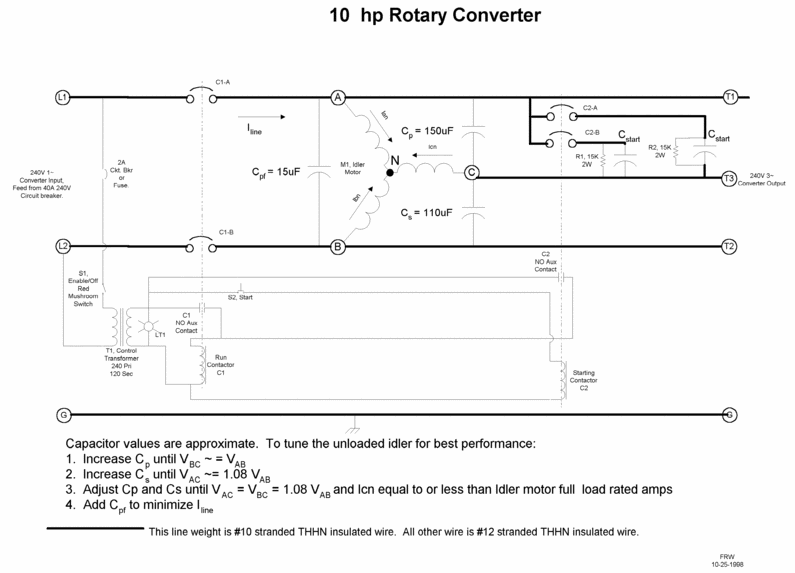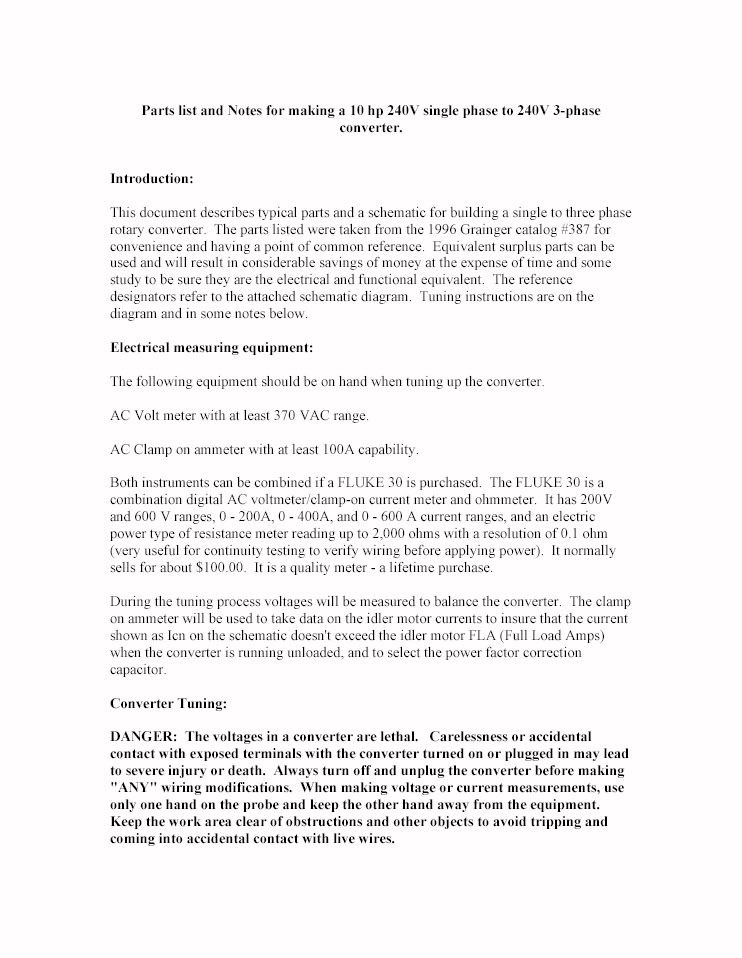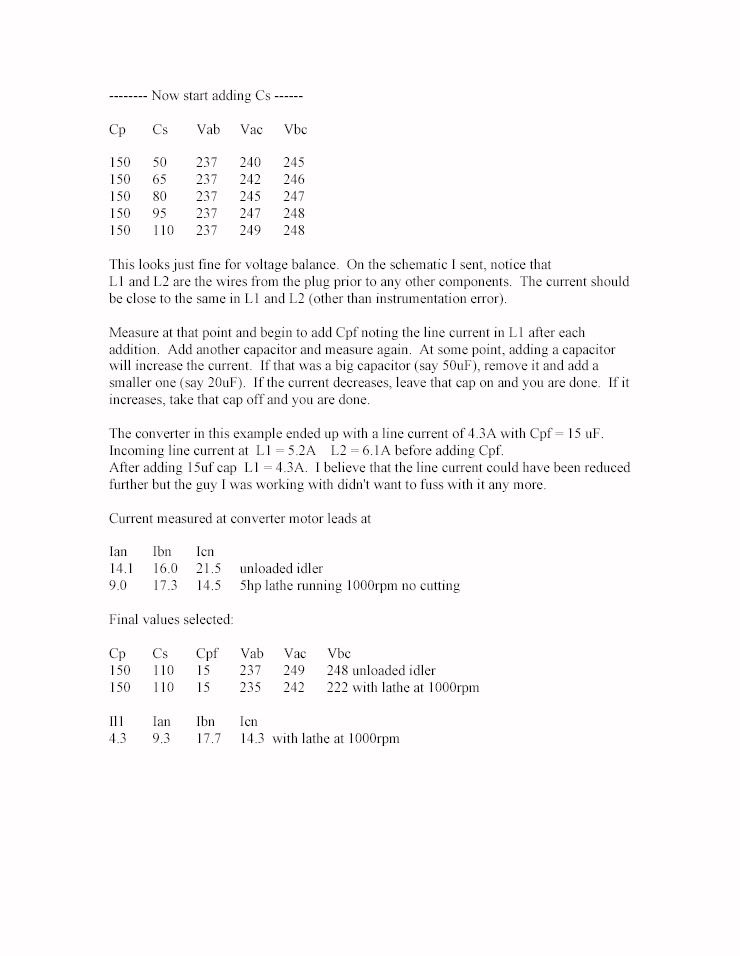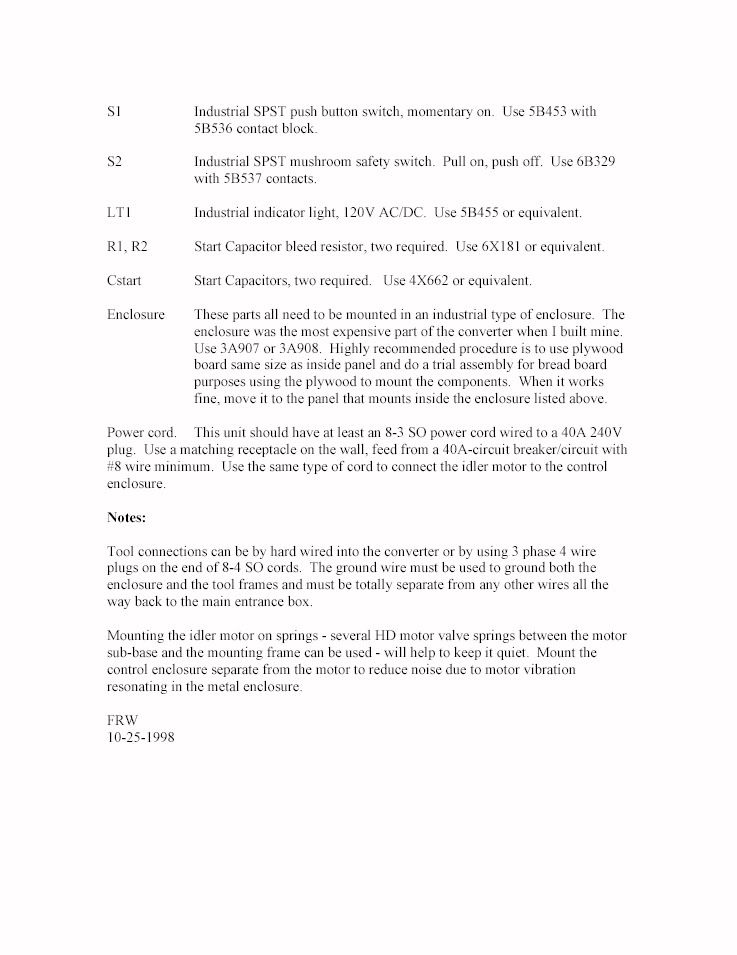Fitch,
Cool! I think the modifications you have added to your original schematic are actually from my design way back when. It had the lighted mushroom switch, etc, etc. I'm certainly not trying to take *any* credit, don't get me wrong. I just think it is kind of neat that the mods actually made it someplace! You were an amazing amount of help and an inspiration.
The mushroom switch was a surplus item from Florida, for those that want to know. It is lighted. You PULL it to energize the circuit. They you push the start button. In my case I added a time delay relay which would control the starting cap contactor. The benefit of this is that you have a repeatable time the cap is in the circuit. This was nice for me too because my idler was outside in a dog-house where I couldn't hear it well. Finally, the time delay relay meant that even if you pushed the start switch again, the starting contactor would not fire. The mushroom switch's light would, of course, be ON so that you could see everything was running.
An alternative to the time delay relay would be a potential relay that identified when the third leg was LIVE. I just didn't have one of these.
The phase converter worked *really* well, for those that want to know. It is now owned by another member on this group. The *only* reason I got rid of it is that I couldn't use it with my finiky CNC lathe; I went to a Phase Perfect. As it turned out, however, I had the same problem (premature shut-down) with the PP unit until I figured out how to slow the acceleration ramp on the machine. I probably could have used my trusty old Williams converter on my lathe just fine.
Thanks again, Fitch, for all your help those many years ago! Have you kept track of the number of people you have helped? I'm willing to bet it is staggering... Again, thank you, thank you, thank you!
--Alan
P.S. The converter I'm talking about was posted on this NG. I don't think I ever posted pictures of the control box (I have them, but I don't have a hosting sever

so I am a bit out of luck), only the "dog house" that provided cover for the motor. That thread is:
http://www.practicalmachinist.com/ubb/ultimatebb.php?ubb=get_topic;f=3;t=000349#000006














 so I am a bit out of luck), only the "dog house" that provided cover for the motor. That thread is:
so I am a bit out of luck), only the "dog house" that provided cover for the motor. That thread is:
